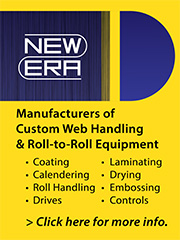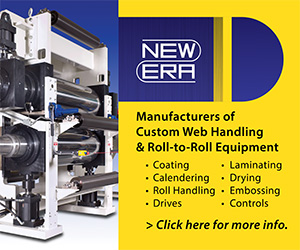Multi-Solution Approach Key to Achieving Sustainability Goals
- Published: February 25, 2020
By Carolina Gregorio, Lead Marketing Manager, Dow Packaging & Specialty Plastics EMEA
The extrusion coating market is growing as global brand owners continue to choose aseptic cartons, stand-up pouches and paper-based flexible packaging formats over glass, metal and rigid containers. As society and consumers drive towards more sustainable packaging solutions, regulators and value chain industry players are responding.
For the flexible packaging industry, the challenge is to set and to reach its own ambitious sustainability goals using multi-solution approaches. Companies need to focus on sustainability initiatives that reduce their impact on the environment, increase the recyclability of their packaging, and incorporate more postconsumer recycled content into packaging where possible while ensuring optimal production efficiency and content protection.
Integrating Bio-Based Materials
Reducing the impact of plastic production on the environment is an important part of reaching sustainability targets. One approach is to start at the source of plastics, the feedstock. Incorporating bio-based, renewable content into feedstocks offers an alternative and more sustainable source of plastics.
This major step towards a more sustainable bio-based plastics is already a reality. Dow has worked in partnership with UPM to turn a waste residue from paper production into bio-naphtha, creating an alternative and renewable feedstock for plastics production. This waste product comes from sustainably managed forests - extracted as a residue when separating wood fiber for pulp production. As a result, Dow is now able to offer a range of bio-based PE coatings resins for different packaging applications. Bio-based resins offer the same performance as their fossil-counterparts thus do not compromise final packaging performance, appearance nor recyclability.
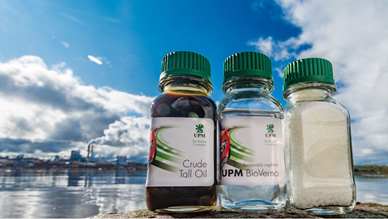
Image source: UMP
Collaboration between Dow and brand owner Elopak, an international supplier of paperboard-based packaging for food and beverages, is one example of more sustainable liquid cartons made with Dow’s renewable-based PE resins. Dow’s renewable-based low-density polyethylene (LDPE) resins, DOWTM LDPE product range, are used to coat the cardboard as well as in the production of the carton caps, resulting in a more sustainable entirely renewable-based beverage carton.
Embracing Design for Recyclability
Designing packaging for recyclability is another route to improve packaging sustainability. Using mono-material packaging from materials like polyethylene (PE) makes it possible to produce packaging suitable for recyclability while offering the same content protection, shelf-appeal and consumer experience as traditional multi-material flexible packaging.
Dow has embraced this approach by developing mono-PE structures designed for recyclability. Dow’s approach comprises of concepts for simple multilayered structures without barrier, more complex packaging with customized barrier for food protection, as well as conversion process redesign – including the use of compatibilizers to help enhance the mechanical recyclability of multilayer packaging and mono-PE spouted pouches designs in collaboration with different packaging value chain partners.
These technologies have already proved themselves in the market thanks to successful collaborations like the joint development for brand owner Reckitt Benckiser of a mono-PE stand-up pouch for their FINISH dishwasher detergent pods brand. The packaging can be produced on existing packaging equipment at it is based on a blown mono-PE film with good seal performance and an extrusion coating layer on top enabled by DOWLEXTM 2006G to ensure protection of a high-quality printed surface offering very good stiffness and optics for packaging appearance. The resulting pouch enables extra functionalities like zippers and easy opening delivering flexibility for different designs.
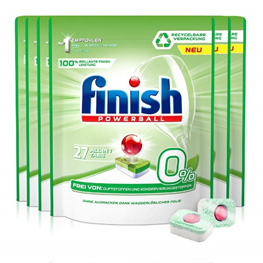
Image source: Reckitt Benckiser
Another example of our innovations to address packaging recyclability is the collaboration with barrier films producer Toppan Printing, which led to the development of a tie layer providing outstanding adhesion to transparent vacuum deposited barrier coatings for contents like food, liquids and aggressive materials therefore enabling a suitable replacement to Aluminum foil for improved recyclability.
Using Less Materials
Converters can also reach sustainability goals by reducing materials used in packaging. Using fewer but higher performing materials in packaging reduces waste, lowers packaging weight with downgauging, and has the potential to reduce harmful emissions.
This approach has been embraced by Dow for several years. For example, Dow’s ELITETM high-performance sealants offer up to 40 percent pack material savings when used in the sealant layer of liquid cartons for beverages vs former standard LDPE rich solutions, with no compromise in fast speed packaging process and good packaging integrity.
Another example is Dow’s collaboration with converter partner Huhtamaki to reduce material in dry-soap powder packaging by 23 percent redesigning coating using SURLYNTM with no loss in packaging functionality or production efficiency.
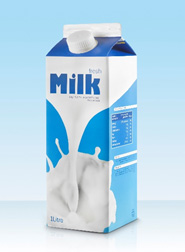
Image source: iStock
Realizing these solutions requires a combination of knowledge, experience, and equipment across the value chain. Brining technologies and solutions to the market requires collaboration, no one company has all the experience nor all the answers.
Collaboration is Where Innovation Begins
This is the concept behind Pack Studios™, Dow’s collaborative network dedicated to innovation in packaging. Designed to gather global technical and market expertise from across the packaging value chain, Pack Studios™ provides a full suite of services to help brand owners and converters accelerate the time it takes to get innovations to the market. From extrusion coating and laminating equipment to digital predictive modelling, the versatile set-up offers direct scale-up of results to industrial facilities.
Converters can meet the challenge of key recyclability targets and achieve broader sustainability goals through a multi-solution approach. By designing with the circular economy in mind from the beginning, packaging produced by extrusion coating can use less materials, be redesigned for recyclability, and incorporate bio-based resins. Through collaborative efforts, converters, brand owners, and suppliers can respond to the demand for greater sustainability, implementing real solutions in the market and helping to make plastics part of the circular economy.



